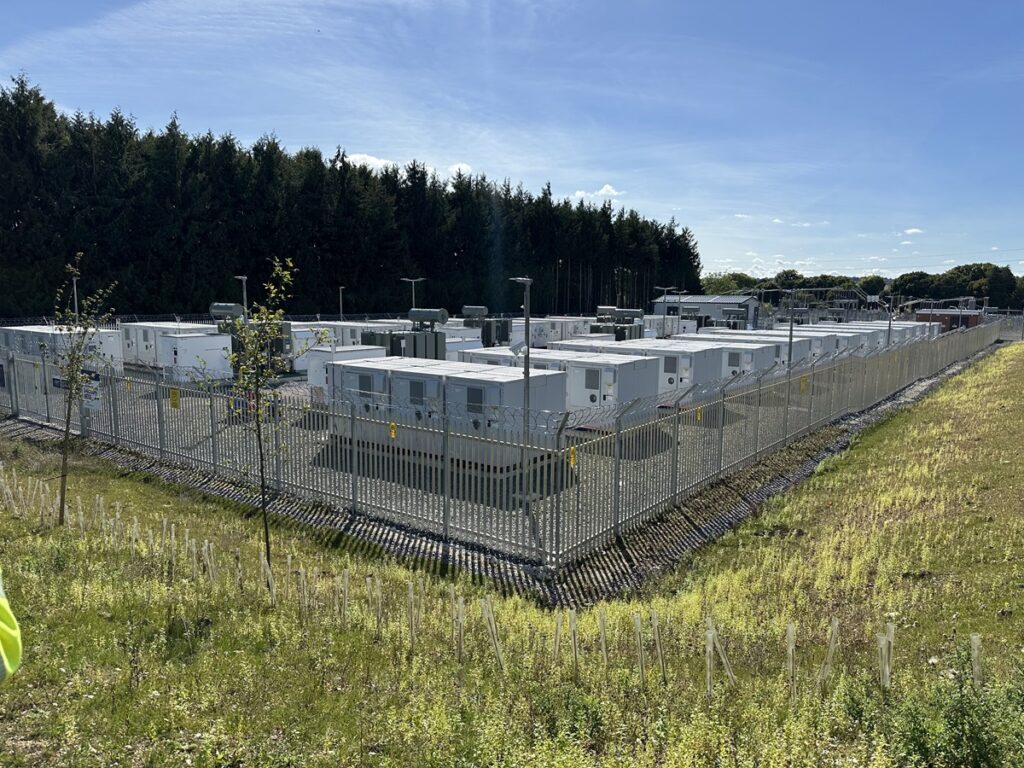10 things every developer needs to know about battery energy storage systems
Battery storage expert Paul Julian examines the formidable challenges facing developers when planning, designing and building BESS projects — and shares ten recommendations for overcoming them.
Battery energy storage systems (BESS) are at the forefront of the global transition towards a more sustainable and resilient energy future. As grid modernisation gains traction, these systems will play an increasingly important role in meeting the ever-growing demand for clean, reliable power.
However, the development of BESS projects comes with its own formidable set of challenges. These range from technological hurdles to regulatory complexities.
Here, we examine the obstacles that arise in the planning, design and construction of battery energy storage systems and share ten recommendations that developers can action based on our own experience supporting clients to progress major BESS projects of all types in the U.K., such as SSE Renewables’ first ever BESS project in Salisbury, Wiltshire.
1/ Stay abreast of technical advancements and compatibility
The rapid evolution of battery technologies poses both opportunities and challenges for BESS developers. Staying abreast of the latest advancements is crucial, as these will have a big influence upon the efficiency, lifespan, and cost-effectiveness of the BESS installation. Developers must carefully select and integrate components to maximise system performance.
2/ Thoroughly analyse site characteristics before selecting an area of land
Before selecting an area of land for potential BESS development a thorough analysis of various important site characteristics must be carried out. These will include, but not be limited to, the type of terrain, proximity to both residential and commercial properties, access — both during construction and operation, environmental conditions, legal status/classification, site size, flood risk and proximity to a suitable grid connection.
3/ Navigate the delicate balance between upfront costs and long-term benefits
While the cost of battery storage technology has been decreasing, the initial capital investment for BESS projects can still be substantial. Securing funding and achieving financial viability remains a significant challenge. Developers need to navigate the delicate balance between upfront costs and long-term benefits, considering factors like battery degradation, through life maintenance, system integration, insurance and end of life costs.
4/ Be aware that regulatory requirements may change during the project lifecycle
Navigating regulatory landscapes can pose a considerable challenge for BESS projects. As BESS is a relatively new technology, regulations and standards are currently diverse and evolving at local, national, and international levels. There is currently not the same body of knowledge available that exists for more established installation types.
Furthermore, regulatory requirements may change during the project lifecycle. Developers need to be aware of this and make project adjustments in real time. Securing necessary permits, addressing environmental concerns, and complying with safety standards demand meticulous planning and engagement with regulatory bodies.
The absence of standardised regulatory frameworks and, in some cases, national or international technical standards for energy storage can introduce uncertainty and delays in project development. Clearly identifying the basis of design and any national or international standards invoked at an early stage in project development is advisable.
5/ Consider timing of grid connection
Integrating BESS into existing power grids presents technical and logistical challenges. Ensuring seamless interconnection with the grid, managing voltage fluctuations, and addressing grid reliability concerns and, in some cases, potential curtailment, are critical aspects of project development. In addition to technical considerations, timing of grid connection must be considered when developing project programmes.

6/ Prioritise sustainable practices in sourcing materials, manufacturing processes, and end-of-life disposal strategies
The environmental impact of manufacturing, operation, installation and disposal of batteries cannot be ignored. Balancing the environmental benefits of BESS with the potential ecological consequences poses a significant challenge. Developers must prioritise sustainable practices in sourcing materials, manufacturing processes, and end-of-life disposal strategies to minimise the overall environmental footprint of BESS projects.
7/ Invest in robust environmental assessments that demonstrate good design
Many BESS installations, which are currently in planning, are in relatively close proximity to residential and/or commercial properties. The local community may well be concerned with issues such as visual impact, fire safety, noise, impact on drainage etc. All these aspects need to be addressed in robust environmental assessments that demonstrate good design and avoidance of significant effects. Residents and businesses must be kept well informed throughout via meaningful community engagement.
8/ Seek supply chain transparency
As laudable as the goal of achieving net zero is, some reports suggest that the supply chain for certain key battery materials e.g., cobalt, lithium, and nickel, has been associated with unacceptable labour practices. These materials are often sourced from countries where ineffective labour regulations and oversight contribute to the exploitation of workers. Transparency at all levels in the supply chain is essential.
9/ Implement robust monitoring and maintenance programmes
Ensuring the long-term reliability and performance of BESS is crucial for project success. Battery degradation over time, unforeseen technical issues, and the need for regular maintenance pose ongoing challenges. Implementing robust monitoring and maintenance programmes and the sharing of operational experience as it is acquired, are essential to address these concerns and maximise the operational life of BESS projects.
10/ View projects through a whole system lens
The above points show that individual BESS projects are a complex undertaking. We know from experience that project development hinges not only on the ability to bring together multidisciplinary teams and skillsets but also the ability to view projects through a whole system lens so that the needs of technology developers, financial institutions, regulatory bodies and local communities are fully integrated.
Looking at the bigger picture however, these industry-wide challenges must be addressed as the energy landscape continues to evolve. Only then can we unlock the full potential of BESS and deliver maximum benefits to a modernised transmission grid — the backbone of our transition to a clean energy future.
If you’re keen to learn more about the energy transition, click here for more content. You can also find out more about how our team is supporting BESS projects here.






